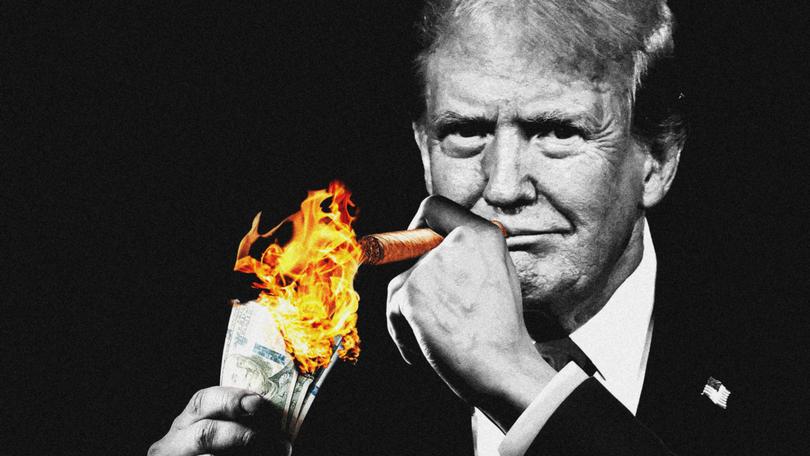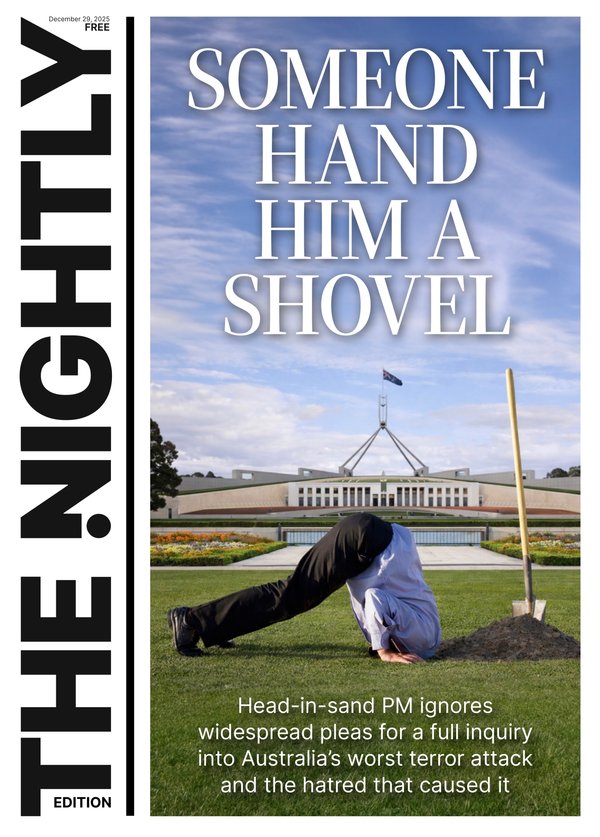THE WASHINGTON POST: What President Trump’s team wants from the rest of the world

More natural gas purchases from American firms. Fewer tariffs on US exports. Lower taxes on Silicon Valley tech giants. Pledges to stop China from using other nations to ship its products to the United States.
These are just some of the demands the Trump administration is expected to make in negotiations with dozens of countries that are trying to avoid steep levies that were briefly put in place last week before being abruptly delayed. While substantial confusion remains about what precisely the White House will want, a clearer picture of what these bilateral deals could look like is beginning to emerge, according to interviews with more than a dozen people involved in or briefed on the talks, some of whom spoke on the condition of anonymity to reflect private deliberations.
On Wednesday, President Donald Trump suddenly paused large-scale tariffs that were scheduled to go into effect on more than 70 nations, a move he partially attributed to alarming fluctuations in the bond market. The President said the tariffs would remain suspended for 90 days to give his advisers and their foreign counterparts time to reach individual agreements - a process he said had already begun with Vietnam, Japan, South Korea and Israel, among other countries. (Mr Trump has left in place a 10 percent tariff on virtually all imports to the United States, while escalating tariffs on China to more than 100 percent as the pause on other countries remains in effect.)
Sign up to The Nightly's newsletters.
Get the first look at the digital newspaper, curated daily stories and breaking headlines delivered to your inbox.
By continuing you agree to our Terms and Privacy Policy.White House officials have expressed optimism that deals could be reached in the next few weeks.
“The biggest problem they have is they don’t have enough time in the day,” Mr Trump said of his aides on Wednesday. “Everybody wants to come and make a deal.”
But substantial fuzziness remains about exactly what these deals could look like, in part because of uncertainty about the president’s objectives. Even some of Mr Trump’s advisers privately acknowledge that they lack clarity about the goals, two of the people said.
Mr Trump, for instance, has repeatedly emphasised that he wants to close the US trade deficit with other countries. This idea has been panned by both liberal and conservative economists - it makes little sense for the United States to export as much to poor nations as it imports and even attempting to do so could prove painful.
It is possible Mr Trump could settle for deals that narrow these deficits through agreements requiring the United States to sell more to these countries. But that would still leave unclear the contour of negotiations with advanced economies that have trade surpluses with the United States, such as Australia and Britain. And deals in which foreign countries agree to buy some more US-made products would hardly achieve the global balancing of trade Mr Trump is seeking, which has been primarily fuelled by the trade practices of a few countries that are heavy exporters.
Even more confounding to some foreign and US officials were the comments last week of White House aide Peter Navarro, who panned German carmaker BMW’s multibillion-dollar investment in a South Carolina factory as “bad for America.” That plant appeared to reflect precisely the kind of American manufacturing Mr Trump has been demanding for years.
“We have no idea what they want from other countries, and worse is that other countries don’t know what Trump wants from them,” said Doug Holtz-Eakin, president of the American Action Forum, a centre-right think tank that has been sceptical of Trump’s tariffs. “I don’t know how you do negotiations in those circumstances.”
Slow start
In the absence of information, ambassadors, trade representatives and other top officials have been calling and texting each other to try to share insights. They have talked about the relative merits of being assigned Treasury Secretary Scott Bessent or Commerce Secretary Howard Lutnick as their interlocutor and tried to understand what kinds of ideas get the Trump team energised.
But it has been slow going. One senior diplomat from a major US trading partner said that in the days following the Rose Garden tariff announcement, the White House didn’t respond on what could be offered to reduce the tariffs. Now that the highest tariffs have been paused, Trump officials finally appear ready to conduct a normal negotiation rather than simply demand concessions without offering anything in return - but it still remains unclear exactly how the White House wants to proceed, the diplomat said.
“The Indian team has found it very difficult to find clear interlocutors. The Japanese don’t know who to speak with on the US side. There is a lot of confusion,” said one person aware of the matter, speaking on the condition of anonymity to describe private negotiations.
But the basic outline of what the Trump team is seeking has emerged in their initial conversations, officials and experts said.
The deals are likely to be specific to the problems identified by US officials in each country. Senior Trump aides such as Mr Navarro and US Trade Representative Jamieson Greer have said they want other countries to lower both tariff and “nontariff” barriers, such as intellectual property theft and import quotas. Officials at the White House Council of Economic Advisers and the US Trade Representative have spent weeks studying the policies they believe are fuelling large trade deficits with countries like China and potential opportunities to promote US exports. That work could inform the specific asks made by the administration.
Chief among the expected demands is for countries such as Vietnam and Mexico to no longer serve as intermediate stops for Chinese firms and products seeking to evade US tariffs - a practice that has alarmed officials in both parties.
The United States will be focused on ensuring that “goods from Vietnam are actual Vietnamese goods,” said Daniel Kishi, a policy adviser at American Compass, a centre-right think tank. Mr Kishi said the Trump team is likely to push other countries to match their tariffs on China with the rates the United States applies to China and synchronise their use of other tools to prevent China from controlling supply chains in critical sectors.
“My belief has been, the central focus has been China,” said Richard Mojica, a trade attorney at Miller & Chevalier who previously worked for US Customs and Border Protection. Mr Mojica said he expects Mexico to reach a deal with the United States in part by agreeing to limit imports of products of Chinese origin: “That would be entirely consistent with the idea of not only getting more market access of US products into other countries - but also limiting Chinese access into the U.S.”
But foreign countries may be reluctant to agree to these restrictions. Vietnam depends on China for roughly 40 per cent of its imports, and Chinese President Xi Jinping is set to visit the country this week. Other Asian nations that the United States wants to reach a deal with - Malaysia, Bangladesh and Thailand - are similarly more economically connected with China than the United States.
Sarah Bianchi, the No. 2 trade official during the Biden administration who is now a senior managing director at Evercore ISI, said many of these countries have little incentive to antagonise Beijing, particularly after Trump’s unilateral tariff threats wreaked global havoc.
“A lot of countries, particularly those in Asia, have economies that are extremely intertwined with China,” Ms Bianchi said. “They are not looking to team up with the US to explicitly counter China, particularly after undergoing a profound policy shock caused by the US.”
Deals could be easier if Mr Trump is content to replicate the pattern he established during his first term. In 2019, China agreed to buy more US goods as part of a deal to lift tariffs - although Mr Trump later complained that Beijing never followed through.
Gas, beef and tech
Two people briefed on the administration’s thinking said deals are likely to include a range of commitments to benefit specific domestic industries. The Japanese, for instance, may be encouraged to commit to buy large amounts of natural gas produced in the United States. Europe has taxes and regulations on internet giants and restrictions on beef imports that could be subject to negotiation. (Since Europe and the United States have largely already dropped tariffs on each other’s imports, trade deals must address nontariff barriers.)
US farmers, bludgeoned by the trade war thus far, could also stand to benefit from country-specific deals, particularly if European countries are willing to relax restrictions on some American agricultural exports.
Some trade experts doubt that these industry-specific deals would do much to return the United States to the glory of its manufacturing prowess. But with the bond market continuing to fluctuate even after the tariff pause, the President may feel he has to cut narrower deals rather than let disruptive import duties on dozens of countries snap back into effect.
Foreign countries may deploy their own countermeasures as well, particularly if they’re willing to dump their holdings of US Treasuries. And Mr Trump has already demonstrated a willingness to back down in the face of financial market volatility, which could weaken the US position.
“The key question is if they start making performative deals to help some particular company, or if they focus on meaningful commitments to rebalance trade and create space for domestic manufacturing,” said Lori Wallach, director of Rethink Trade at the American Economic Liberties Project, a left-leaning think tank. “If the plan is just to have Europe get rid of its tech privacy policies and allow us to send them our beef, that has nothing to do with reducing the chronic US trade deficit with the world.”
© 2025 , The Washington Post
